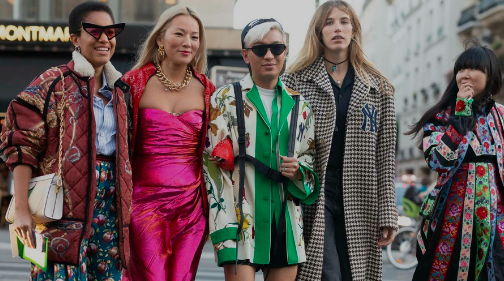The advent of social media has revolutionized the way information is disseminated, and the fashion industry has not been immune to this transformation. One of the most significant impacts has been the rise of social media influencers, individuals who leverage their online presence to connect with audiences and promote brands. This essay delves into the factors contributing to the emergence of social media influencers, their influence on the traditional modeling industry, and the evolving dynamics between these two forces within the realm of fashion.
- The Birth of Social Media Influencers:
The rise of social media influencers can be attributed to the democratization of content creation and distribution. Platforms like Instagram, YouTube, TikTok, and others have provided individuals with the tools to curate and share their personal styles, interests, and experiences with a global audience. Unlike traditional models, social media influencers often begin their journeys independently, building their followings organically by creating authentic and relatable content.
- Authenticity and Relatability:
One of the key factors driving the success of social media influencers is their ability to project authenticity and relatability. Unlike traditional models, influencers often share unfiltered glimpses into their lives, including behind-the-scenes moments, personal struggles, and everyday activities. This authenticity resonates with audiences, creating a connection that goes beyond the glossy, aspirational images presented by traditional modeling.
- Diversity and Inclusivity:
Social media influencers have played a pivotal role in challenging traditional beauty standards and promoting diversity and inclusivity. Many influencers celebrate different body types, ethnicities, and gender identities, providing representation that has been lacking in mainstream modeling. This shift has forced the traditional modeling industry to reevaluate its standards and embrace a more diverse range of faces and bodies.
- Democratization of Fashion:
Social media influencers have democratized the fashion industry by breaking down barriers to entry. Traditional modeling agencies typically served as gatekeepers, controlling access to the industry. However, influencers can rise to prominence without agency representation, utilizing their platforms to showcase their style and collaborate with brands directly. This democratization has empowered individuals to pursue careers in fashion independently, challenging the traditional hierarchy.
- Influencers as Brand Ambassadors:
Brands have increasingly turned to social media influencers as effective brand ambassadors. The genuine connection influencers establish with their followers translates into a powerful marketing tool. Influencers seamlessly integrate sponsored content into their feeds, providing a more authentic and relatable way for brands to connect with consumers compared to traditional advertising. The endorsement of influencers has become a sought-after marketing strategy for fashion brands seeking to reach broader audiences.
- Impact on Traditional Modeling Agencies:
The rise of social media influencers has disrupted the traditional modeling agency model. Influencers often operate independently, negotiating their partnerships and collaborations directly with brands. This shift has challenged the traditional agency-client relationship, forcing modeling agencies to adapt their approaches to remain relevant in an industry where influencers wield considerable influence.
- Evolving Standards of Beauty:
Social media influencers have redefined beauty standards by embracing imperfections and uniqueness. Traditional models have often been held to strict beauty norms, including flawless skin, symmetrical features, and specific body proportions. Influencers, on the other hand, celebrate individuality, encouraging their followers to embrace their authentic selves. This shift in perception has contributed to a more inclusive and accepting definition of beauty within the fashion industry.
- The Role of Follower Engagement:
Unlike traditional models who primarily rely on their physical appearance, social media influencers thrive on engagement with their followers. The number of followers, likes, comments, and shares directly contributes to an influencer’s success and marketability. This emphasis on engagement has led to the rise of micro-influencers, individuals with smaller but highly engaged audiences, challenging the notion that influence is solely measured by follower count.
- Collaborations and Co-Creation:
Social media influencers often engage in collaborations with brands, participating in the co-creation of products and collections. This direct involvement in the creative process distinguishes influencers from traditional models who typically serve as a canvas for designers’ visions. The collaboration trend has given influencers a sense of ownership and influence beyond being mere endorsers, further blurring the lines between influencer marketing and traditional modeling.
- Challenges and Criticisms:
While social media influencers have reshaped the fashion industry, they have not been without criticism. Some argue that the lack of industry regulations and standards for influencers can lead to inauthentic content and unethical practices. Additionally, the emphasis on follower count and engagement has fueled concerns about the impact of influencer culture on mental health, as individuals may feel pressure to present curated and aspirational versions of their lives.
Conclusion:
The rise of social media influencers has undeniably transformed the fashion industry, challenging traditional norms and redefining the concept of influence. Their authenticity, relatability, and ability to connect with diverse audiences have positioned influencers as powerful figures in the world of fashion marketing. As a result, traditional modeling agencies and brands have had to adapt to this new landscape, embracing diversity, inclusivity, and a more direct relationship with consumers. The ongoing interplay between social media influencers and the traditional modeling industry is indicative of the ever-evolving nature of fashion, where individual voices have the potential to shape and redefine the industry’s future.
